

-
Right now, a furnace is burning somewhere in Tsubame-Sanjo.
Not just for today, or tomorrow, or the day after.
No matter how the world changes, the fires of our factories continue to burn.
It is our wish to preserve their flames for future generations.Human passion can never be reduced to ash.
For one month this autumn, we will be sharing the daily workings of Tsubame-Sanjo’s factories through videos and live streams.
We’ll look behind the doors of factories specializing in metal fabrication, blacksmithing, woodworking, and manufacturing. There will also be demonstrations and talk events with Tsubame-Sanjo’s craftspeople.
In the spirit of the Tsubame-Sanjo Factory Festival, Live! Kouba will show the factories as they are.LIVE! KOUBA
This autumn, the factories and workshops of Tsubame-Sanjo come to you.
Join us to celebrate the flames of craftsmanship.- Details -
Date: Oct. 1 - Oct. 31
Schedule:
8:00 JST – Video Upload (Official Website)
14:00 JST – Live Stream (Official Website and Youtube Page)
19:00 JST – Live Special talk(Only 6th, 20th, 31th)SNS & Infomation
Facebook
Instagram
Twitter
Official Book 2019
Official Mail MagazineTeam
Organization / Management : Tsubame-Sanjo Factory Festival Committee
Cosponsor : TsubameSanjo Regional Industries Promotion Center, Sanjo-city, Tsubame-city
Event Direction : method
Art Direction / Design : SPREAD
Photography : Ooki Jingu, Kazuhiro Kodaira
Projection : Tomoya Kishimoto
Edit / Sentence:Yoshinao Yamada
Web : Smile Farm
Translation : Zackary Kaplan
Press:HOWContact:
Tsubame Sanjo Regional Industries Promotion Center
Tsubame Sanjo Brand Development Department
1-17, Sugoro, Sanjo, Niigata, Japan
TEL:+81 256-35-7811
Email:kouba-fes@tsjiba.or.jpPress Contact:
HOW INC.
Tel: +81.(0)3.5414.6405
Email:pressrelease@how-pr.co.jp -
01THU October
Open
: Japanese Nails
Japanese Nails: Hizukurino Uchiyama

Tsubame-Sanjo: Shinano River

Open: Sutoka
In 1625, a local governor promoted nailsmithing as a second source of income for farmers impoverished by frequent floods. This marked the beginning of the metalworking industry in Tsubame-Sanjo.
Around the same time, large fires in the capital city of Edo (modern-day Tokyo) created a massive demand for nails, and blacksmithing flourished in Tsubame-Sanjo. Over the decades, Tsubame-Sanjo’s smiths used their knowledge from nailsmithing to begin manufacturing knives, copperware, and a large variety of other tools. When Western-style nails and architecture were introduced in the late 1800s, demand for traditional Japanese nails plummeted, and the number of nailsmiths declined. Today, only one traditional nailsmith remains in Tsubame-Sanjo.
However, the need for traditional nails has not disappeared. Japanese nails in many shapes and sizes are essential for restoring shrines, temples, and traditional buildings. Hand forged one-by-one, traditional nails are durable and resistant to corrosion. Today, the same techniques used to make Japanese nails are being used to make camping pegs strong enough to pierce asphalt.
-
02FRI October
Materials
& Metal Casting
Materials: Nozaki Chugoro Trading Company

Copper Mine: Maze Copper Mine

Metal Casting: Sanjo Special Casting

Materials: Suwada
The Maze (“mah-zeh”) copper mine located to the west of Tsubame-Sanjo (modern-day Nishikan, Niigata) was active for 220 years starting in 1700. The mine’s only refinery was located in Tsubame, and this led to the rise of a flourishing copperware and kiseru tobacco pipe industry.
Metal casting, which originated in Mesopotamia around 3,600 BCE, is a type of metalworking in which liquid metal is poured into a mold. The artisans of Tsubame-Sanjo excel at handling and utilizing many different metals. Archeologists have identified the remains of a smelting forge and a cast iron pot at the Shimocho site in Sanjo, which dates back to the Muromachi period (1336– 1573). The pot is remarkable for its extraordinarily thin, 3 mm wide walls―a thickness that remains difficult to produce even today. It is reasonable to assume that there were already highly skilled artisans living in Tsubame-Sanjo as early as the Kamakura period.
-
03SAT October
Factory Holiday
-
04SUN October
Factory Holiday
-
05MON October
Hoes & Sickles

Hoes: Kondo Metalworks

Sickles: Munetoshi Sickle Works

Farming: Hiura Farms

Hoes: Kondo Metalworks × Kayamori Farms
There are few agricultural tools as unsuited to mass production as the hoe. Hoes vary in size and shape throughout the country due to regional differences in soil type, crop variety, and field work. For example, farmers in Tsubame-Sanjo’s home prefecture of Niigata prefer hoes with wide blades suited to hilling the soft soil in rice paddies. In the Kanto region, however, where soils are coarse, and vegetable fields are more common than rice paddies, farmers need hoes suited to digging and cutting. Until around the end of WWII, it is estimated that Japan was home to as many as 18,000 blacksmiths producing 10,000 different kinds of hoes. However, as farms mechanized, demand for hand hoes declined, and the number of smiths specializing in agricultural tools dropped throughout Japan. Over time, requests for tool repair work and new orders from people around the country started to flow into Tsubame-Sanjo.
Production of another important agricultural tool, the sickle, traces back to the 1650s in the early Edo period. Large increases in cultivated land acreage created new demand for farming implements. Tsubame-Sanjo’s smiths forged sickles for various uses, from cutting grass and weeds to harvesting rice. Eventually, the sickles from Tsubame-Sanjo would come to be used throughout Japan. As with hoes, sickles evolved to reflect regional differences in crops and vegetation. Although demand for sickles decreased with agricultural mechanization, Tsubame-Sanjo’s smiths continue to make sickles that meet the needs of users around the country. By continuing to produce agricultural tools, Tsubame-Sanjo helps preserve the diversity of Japan’s regional agriculture.
-
06TUE October
Billhooks
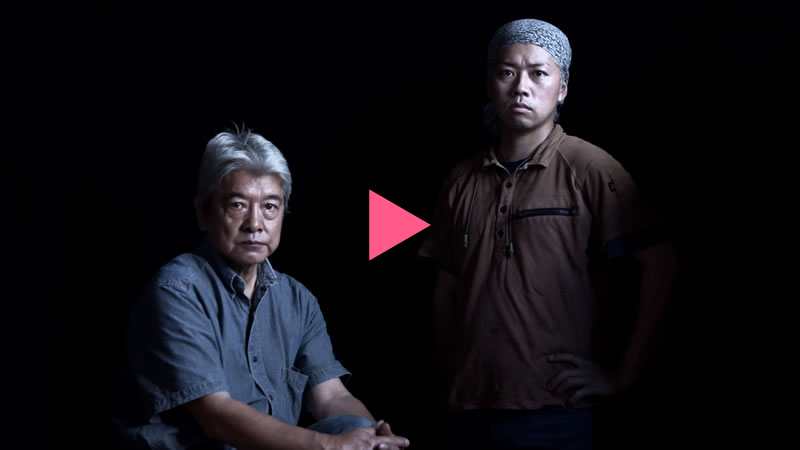
Billhooks: Hinoura Knife Works

Billhooks: Hinoura Knife Works × Method
In 1661, the knowledge for manufacturing Japanese billhooks (“nata”) arrived in Tsubame-Sanjo from Aizu (western Fukushima). The hey-day of billhook production came in the wake of WWII, during the reconstruction building rush. However, the introduction of chain saws and cheap imported materials made billhooks largely obsolete for industrial uses. With the spread of mechanization, volume, speed, and affordability have become the key tenets of the manufacturing industry. However, one father and son team in Tsubame-Sanjo continue to make billhooks and outdoor knives using traditional methods.
The father, Tsukasa Hinoura, exclusively produces handcrafted knives that combine functional and formal beauty. His namesake brand of outdoor knives is highly regarded overseas. Meanwhile, the Ajikataya brand produced by his son, Mutsumi Hinoura, is popular among people in the forestry industry for their excellent utility. Although Ajikataya brand knives are predominantly handmade, Mutsumi also accepts limited orders for mass-produced knives. In the Hinoura workshop, a father and a son continue to follow their own paths in pursuit of the ideal blade.
-
07WED October
Saws & Files

Saws: Shirai Industrial

Files: Ishikoma

Files: Karasawa File Works
Saw making came to Tsubame-Sanjo in 1661 from Aizu (western Fukushima) along with the knowledge for making files―essential tools for setting saw teeth. Repeated natural disasters in the late 1800s and early 1900s created a steady demand for saws and files. By around 1900, Tsubame-Sanjo was manufacturing as much as 80% of Japan’s saws and files.
For both saws and files, the setting of the teeth is a crucial stage of production. In saw making, craftsmen use a file to sharpen each individual tooth. For files, chisels are used to hammer teeth out of the steel one row at a time. File manufacturing also requires the use of other files―both to create ridges and to roughen the entire file surface for greater abrasiveness. Japanese file manufacturing features the unique step of applying miso paste to the file before tempering as a way of preventing carbon from clogging the file face.
With the spread of replaceable saw blades and a shift toward the growing Western cutlery industry, file production shrank and evolved. Today, Tsubame-Sanjo files are sought out by violin-makers and other craftsmen from around the world.
-
08THU October
Copperware

Copperware: Gyokusendo

Copperware: Tankosha
During the first half of the 1700s, Japan was the world’s top producer of raw copper. The Maze (“mah-zeh”) copper mine on Mt. Yahiko was especially well known for high-quality copper and drew coppersmiths all the way from Sendai.
These smiths brought with them knowledge for copper hammering, a technique for shaping vessels out of a single copper sheet.Copper’s superior heat conductivity makes it an ideal material for pots, kettles, and everyday tools. Even today, Japanese coppersmiths use hammers and metal stakes set in traditional sitting blocks to shape sheets of copper into finished works. Tsubame-Sanjo’s artisans also use tinning and patination techniques to produce unique and vibrant colors. During the second half of the 1800s, the coloring and hammer patterns of Tsubame-Sanjo’s copperware were highly appraised overseas, and coppersmiths began to produce works of fine art. Today, hand-hammered copperware is once again being made for daily use in the form of tea implements and sakéware, combining utility and artistry to create vessels that last for generations.
-
09FRI October
Tobacco Pipes

Tobacco Pipes: Noboru Tobacco Pipes

Tobacco Pipes: Noboru Tobacco Pipes x Gyokusendo
The kiseru is a smoking pipe for enjoying finely shredded tobacco. However, in the Edo and Meiji periods (1603 – 1912), the kiseru was not merely a tool for smoking tobacco, but also a popular fashion accessory and symbol of status.
Samurai, merchants, and courtesans would often compete amongst themselves, hiring metal engravers to decorate their kiseru with elaborate, custom ornamentation.The techniques for forming and engraving kiseru came to Tsubame-Sanjo in the mid-1700s. By the 1930s, Tsubame-Sanjo was producing 80% of Japan's kiseru. However, with the introduction of paper cigarettes after WWII, the demand for tobacco pipes declined dramatically. Today, only one artisan in Tsubame-Sanjo continues to produce kiseru by hand. Handmade kiseru pipes can be made thinner and lighter than mass-produced pipes―a highly valued quality among kiseru fans.
-
10SAT October
Factory Holiday
-
11SUN October
Factory Holiday
-
12MON October
Polishing
& Turning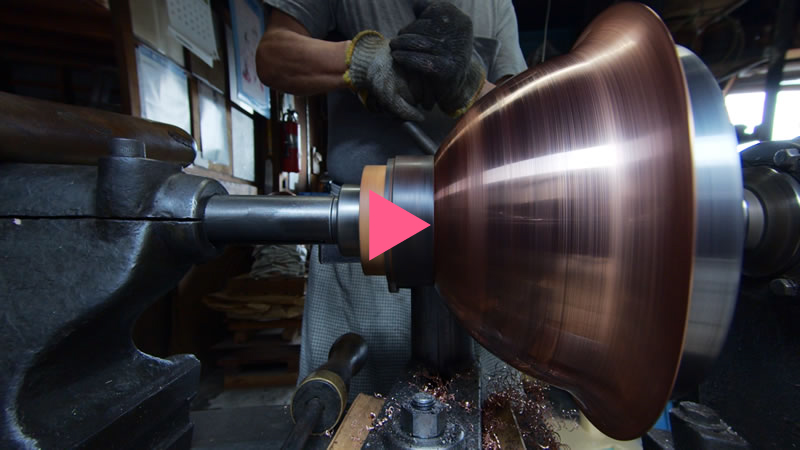
Turing: Tokita Factory

Polishing: Yamazaki Polishing Industrial

Turing: Minoru Works
The manufacture of metal cutlery in Tsubame-Sanjo is said to have begun in 1911 with one order from Tokyo. The polishing techniques developed for kiseru tobacco pipes were applied to manufacturing cutlery, which quickly took root as one of Tsubame-Sanjo’s major products. After overcoming trade difficulties in the wake of WWII, cutlery from Tsubame-Sanjo spread into markets worldwide. Later, as emerging Asian countries came to prominence in the 1990s, Tsubame-Sanjo relied on quality and craftmanship for a competitive edge. Even today, experienced artisans can be seen hand-polishing products on factory floors. Tsubame-Sanjo’s polishers work with many types of pastes and over one hundred varieties of polishing buffs―ranging from rough and abrasive to silk soft―all carefully selected to suit the material, size, and shape of any workpiece.
Metal spinning is a metalworking process in which a disk of sheet metal is spun on a lathe and shaped by applying pressure with a metal rod called a “spoon.” The trade is difficult, and artisans require years of practice. Although most metal spinners rely on dies and mandrels to shape workpieces, Tsubame-Sanjo’s artisans are also capable of free-form spinning. While metal spinning and metal stamping are both techniques that use pressure to shape workpieces, metal spinning excels at affordably producing small numbers of complicated forms.
-
13TUE October
Scissors

Scissors: Taira Scissor Works

Scissors: Watanabe Orchards (Nature Farm)
Scissors are an everyday tool that cut using the shearing action of two blades. Blade alignment determines the sharpness of scissors, and the art of blade setting can take years to master.
Tsubame-Sanjo began manufacturing gardening scissors in the late Edo period (early-to-mid 1800s). When popular interest in flower arranging and bonsai trees took off in the Showa period (1926 – 1989), the industry grew, and scissor production flourished. Pruning scissors for flower arranging are especially diverse. Each of the nearly 300 schools of flower arranging around the country demand scissors with specific shapes and functions. Such variety is only made possible by hand manufacturing.
-
14WED October
Kitchen Knives
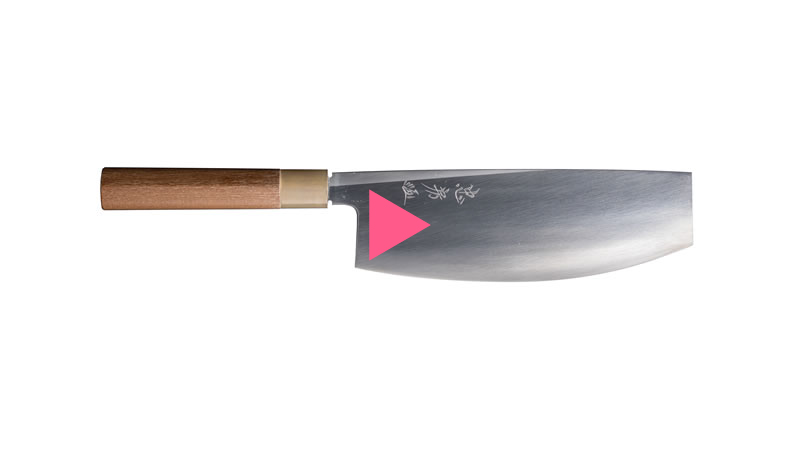
Kitchen Knives: Tadafusa Knives

Kitchen Knives: Tadafusa Knives
During the mid-1700s, Tsubame-Sanjo developed a nationwide reputation for knife production. Hardware traders traveled throughout the country along the Shinano River, collecting orders from far and wide. As a result, Tsubame-Sanjo bladesmiths learned to make every kind of knife.
One of Tsubame-Sanjo’s knife smiths, Tadafusa, has spent years making specialized knives that meet the needs of every kind of profession―from mountain to field, rivers, and sea. Until the rise of aquafarming in the 1960s, Tadafusa produced a wide variety of specialized fishing knives, including crab knives with a spine that doubles as a size gauge. With the decline of the fishing knife market, Tadafusa began producing specialized agricultural blades such as garlic knives and cabbage knives, made to meet the specific needs and produce of each region.
Today, Tadafusa uses their technical expertise to manufacture culinary knives―ranging from soba knives and other types of professional chef knives―to standard knives for the home kitchen.
-
15THU October
Small Knives
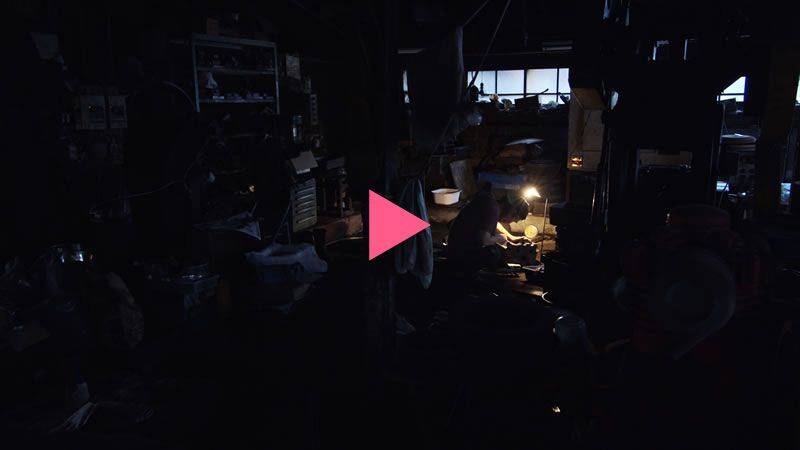
Small Knives: Baishinshi

Small Knives: Masuda Kiridashi Works
Kiridashi are a representative type of Japanese single-edged knife. Small wood-carving knives with sharp, diagonal blades, kiridashi were once ubiquitous in everyday life as a common pencil-sharpening tool. However, with the spread of utility knives and pencil sharpeners, demand for kiridashi knives disappeared from daily life. Today, kiridashi remain essential tools for woodworking, bamboo crafts, and horticulture, specifically for grafting fruit trees and flowering plants. Kiridashi continue to be sought out for their excellent sharpness and blade quality.
-
16FRI October
Squares
& Woodworking
Carptenters' Squares: Shinwa Rules

Woodworking: Kurashige Woodworks

Woodworking: Masako Yamaguchi Woodwork
The carpenters’ square, or framing square, is an L-shaped metal rule used to measure and mark timber. Production in Tsubame-Sanjo can be traced back to the middle Edo period (1681 – 1780), although the hey-day of production wouldn’t come until 1893 with the implementation of new national laws. Later, as modernized building methods shifted toward little more than assembling pre-cut lumber, carpenters steadily had less and less need for framing squares. Shinwa, initially a producer specializing in framing squares, today also makes state of the art devices such as laser rules that project vertical and horizontal guides onto pillars, ceilings, and floors.
Another essential construction tool was the sumi-tsubo ink line. Used for making straight lines at construction sites, production in Tsubame-Sanjo can be traced to the late Meiji period, around 1900. At the peak of production, Tsubame-Sanjo produced over 80% of Japan’s ink lines. When changes in construction techniques and mechanization led to a decline in demand, long-time producers of ink line reels switched over to making wooden chopsticks and utensils. From tool handles to carpentry, a thriving culture of woodcraft developed in the shadow of Tsubame-Sanjo’s metalworking industry. Tsubame-Sanjo’s woodworking and carpentry techniques continue to change and evolve today.
-
17SAT October
Factory Holiday
-
18SUN October
Factory Holiday
-
19MON October
Planes
& Chisels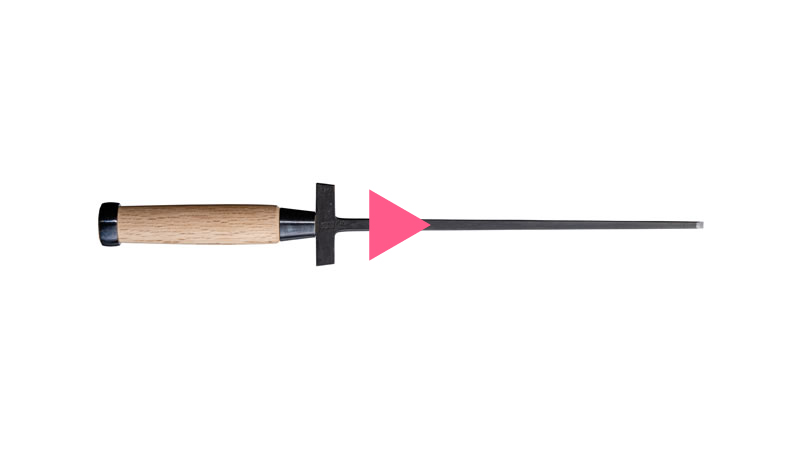
Chisels: Tasai Chisels

Planes & Chisels: Tasai Chisels x Sanjo City Hall
The production of carpenter’s planes and chisels in Tsubame-Sanjo can be traced back to 1882. The plane is a wood shaving tool that comes in a variety of shapes and sizes. Japanese planes are composed of a metal blade couched within a wooden body, and plane manufacturing is a collaborative process between a metalworker and a woodworker. A quality plane needs both a sharp edge and a wooden body that compliments the blade’s specific thickness and angle. Today, this know-how is being applied to new products, such as bonito shavers for the home kitchen.
Carpenter’s chisels are versatile tools that can be used to split, shave or carve holes in wood. Among all of the tools in the carpenter’s toolbox, chisels are said to boast the greatest diversity. They are essential for shaping the complex joints of Japanese timber-frame architecture and are also used for minute adjustments and delicate finishing details. While there were once as many as fifty workshops in Tsubame-Sanjo specializing in carpenter’s chisels, today only six remain. However, custom orders for chisels come from throughout Japan, along with requests for hand axes, spear-planes (“yari-ganna”), and other wood carving tools used by traditional shrine carpenters. In recent years, these same workshops have attracted custom orders from violin and guitar manufacturers overseas.
-
20TUE October
Axes & Pincers

Axes: Mizuno Blacksmith Works

Pincers & Tongs: Koyoshi Metalworks

Axes: Yamatani Industries × Mizuno Blacksmith Works
From the 1900s to the 1920s, carpenters’ axes were produced in large numbers for logging. From large axes for felling trees to smaller hatchets for chopping wood, many different lengths, weights, and sizes of axes entered production. Although industrial demand for axes experienced a sharp decline, the popularity of outdoor leisure activities has created a high demand for axes as camping tools. As a prayer for safety, Japanese axe heads traditionally have seven grooves carved into both faces―each representing a different divinity. For this reason, axes have long been used symbolically to cut the mooring rope of boats at nautical ribbon-cutting ceremonies throughout Japan.
Pincers are a type of clipping tool used to cut wire and nails. Local production is said to have begun in the Taisho period around 1910 when a traveling merchant from the Kansai region brought a pair to Tsubame-Sanjo. After WWII, military demand for pincers dried up, and general market demand shrank due to the appearance of cheap, mass-produced nippers. In response to market changes, Suwada, a longtime manufacturer of pincers, used their knowledge to produce nail clippers and bonsai pruning shears. Today, Suwada manufactures 60 different sizes and types of bonsai pruning pincers―more than any other manufacturer in Japan.
-
21WED October
Dies

Dies: Takeda Precision Dies

Dies: Takeda Precision Dies
The Tsubame-Sanjo area first began manufacturing metal dies as a tool for mass-producing kiseru tobacco pipes during the 1900s and 1910s. The industry progressed around 1930 when the artisans specializing in decorative engravings for copperware and kiseru pipes began cutting metal dies for cutlery. After WWII, metal stamping technology was applied to the manufacture of knives and work tools, allowing many products to be newly mass-produced.
Because dies are delivered to the client upon completion, diemakers only retain the manufacturing samples from testing the dies. While products with simple forms can be made using single-action dies, products with complicated forms are produced using what is called a “progressive die,” in which dies for multiple operations are evenly distributed within a single press, and parts are completed by undergoing successive stampings.
Die design requires the knowledge, experience, and creativity of an experienced craftsman. Today, dies support the manufacture of many of Tsubame-Sanjo’s products.
-
22THU October
Hammers
& Work Tools
Genno Sledge Hammers: Koshiki Forge
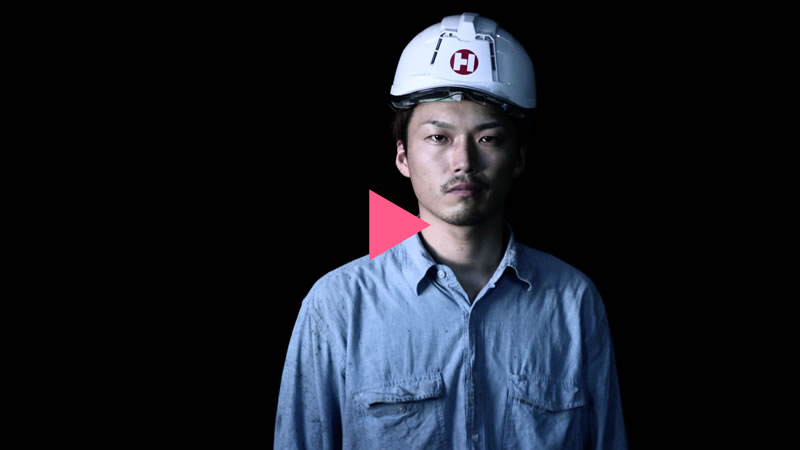
Work Tools: Maruto Hasegawa

Work Tools: Leger
In the early 1930s, Tsubame-Sanjo’s forging and metal polishing technologies were combined to manufacture work tools. Along with Osaka, Tsubame-Sanjo is one of Japan’s biggest producers of work tools and exports large volumes of pliers, wire cutters, and screwdrivers. Pliers are manufactured by shaping a piece of red-hot steel with a die and hammer. The process requires precision-hammering, and experience has a significant impact on plier quality. Moreover, the blades couched at the pliers’ base must be filed and polished by hand―intricate work that cannot be easily mechanized.
Hammers are one tool that humans have used since ancient times. The manufacture of sledgehammers (“genno”) and other types of hammers in Tsubame-Sanjo began spontaneously in the 1920s. At the time, hammer manufacturing involved using a double jack to beat crude iron―typically collected as waste from metal ships―into the shape of a hammer. A steel cap would then be forge-welded onto the hammer face and filed down. With technological advancements, it soon became possible to manufacture full steel hammers out of steel rod. The method of shaping the metal also shifted from manual double jacks to motorized belt hammers, drop hammers, and air hammers, which led to an increase in productivity. Sledgehammers remain an essential tool for many craftspeople and continue to support Tsubame-Sanjo’s blacksmiths today.
-
23FRI October
Machine Parts
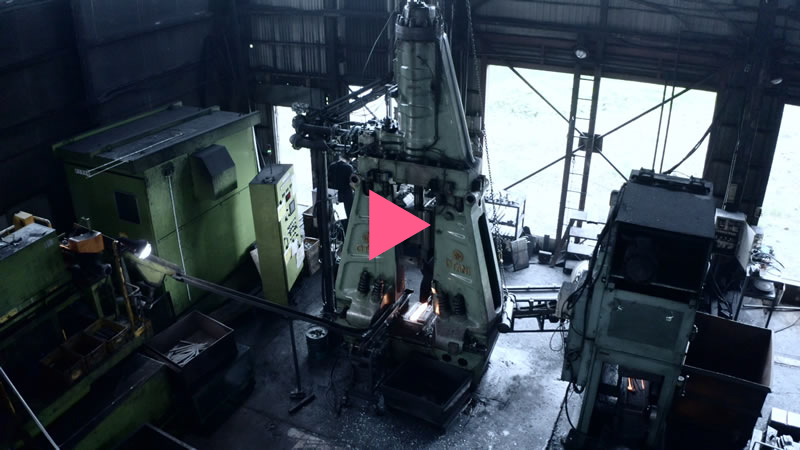
Forging: Aiba Industrial

Welding: Hi-Serve Ueno

Machine Parts: Yamatoki Metalworks
After WWII, the introduction of machine presses created new possibilities for Tsubame-Sanjo’s metalworking industry. Although the region’s smiths had long produced traditional nails and carpentry tools, the new presses allowed workshops to manufacture a wide variety of machine parts and architectural hardware such as snow guards, supports for rain pipes, and kitchen equipment. However, a press with a precision die is not enough to produce durable, high-quality parts. The knowledge of an experienced craftsman remains essential. Even when working with a single metal, craftsmen must account for minute differences in thickness and hardness. Experienced craftsmen continually adjust the pressure and action of their press to suit each workpiece.
-
24SAT October
Factory Holiday
-
25SUN October
Factory Holiday
-
26MON October
Tableware

Tableware: Oizumi Industrial

Custom Metal Pressing: Fujinos

Engraving: Minagawa Engraving

Tableware: Sanjo Spice Lab
The manufacture of metal cutlery in Tsubame-Sanjo is said to have begun in 1911 with one order from Tokyo. From there, large orders for cutlery started to pour in from Europe and elsewhere. The forging, engraving, and metal polishing skills cultivated through the production of copperware, kiseru pipes, and work tools were applied to the manufacture of cutlery. Over the past century, Tsubame-Sanjo has continued to manufacture metal cutlery and currently supplies over 90% of the cutlery made in Japan.
Cutlery comes in all shapes and sizes with many unique functional requirements. Over the decades, Tsubame-Sanjo’s manufacturers have continued to meet the special demands of every kind of cutlery. One such manufacturer, Oizumi Industrial (“Ohizumi Bussan”), is known for manufacturing Denmark-born designer Kay Bojesen’s “Grand Prix” line of stainless-steel cutlery since 1991. Many of Tsubame-Sanjo’s factories enjoy international recognition for their exceptional techniques and production quality. Today, the stainless-steel manufacturing techniques acquired through the production of cutlery are also being applied to pots, plates, cups, and other types of metal houseware.
-
27TUE October
Razors

Japanese Razors: Sanjo Seisakusho

Japanese Razors: Inakoshi Barber Shop
The Japanese straight razor (“wa-kamisori”) and Japanese spring scissors are two tools unique to Japan. Although Japanese razors were originally used by samurai to shave the tops of their heads, after the start of the Meiji period (1868 – 1912), they came to be predominantly used as beard-shaving tools in barbershops. Japanese razors are made by forge welding a steel blade onto a bar of iron. The traditional forging process is done entirely by hand. Once sharpened, the blade boasts a super thin, micron-width edge capable of cutting hair on contact.
Today, Tsubame-Sanjo is home to Japan’s last razor smith. Inquiries from people seeking their famously sharp blades continue to arrive from throughout Japan.
-
28WED October
Coating

Coating: Eizuka Works

Black Stainless Steel: Tm

Coating: Eizuka Works × Mgnet
The first example of chemical coloring in Tsubame-Sanjo is said to have been conducted by hand-hammered copperware producer Gyokusendo in around 1860. Founded by Kakube Tamagawa, Gyokusendo initially only produced uncolored copperware for everyday use. However, the workshop’s second-generation head, Kakujiro Tamagawa, began incorporating various artistic elements. One such element was a decorative, red-brown patina called “sentoku.”
After cutlery manufacturing took root in Tsubame-Sanjo in 1911, it wasn’t long before manufacturers began applying brass plating. Tsubame-Sanjo’s first factory specializing in silver plating opened its doors in 1931. After WWII, stainless-steel replaced brass as the most common plating material, and by the 1970s, Tsubame-Sanjo’s factories were manufacturing stainless steel in a variety of colors. Today, Tsubame-Sanjo’s metalware products are finished using a wide variety of coating, plating, and oxidizing techniques.
-
29THU October
Packing
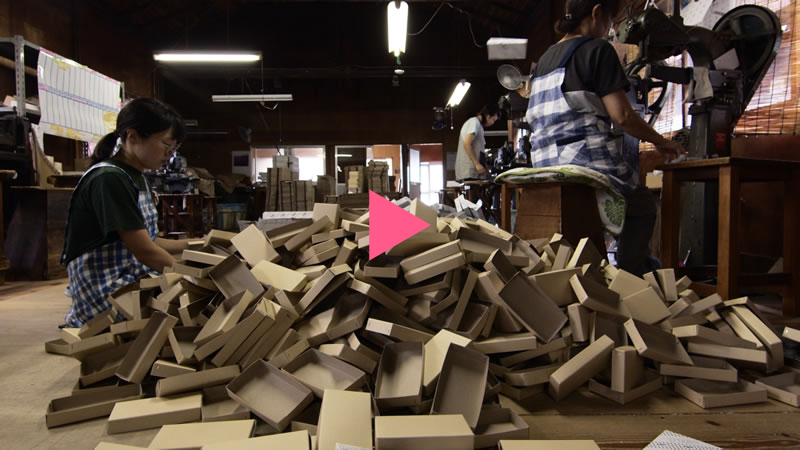
Packing: Aiba Paper Packaging

Packing: Izumi
When Japan opened to trade in the Meiji period (1868 – 1912), the copper utensils and kiseru tobacco pipes produced in Tsubame-Sanjo since the 1700s became export items. These products enjoyed high demand as gifts, and packing materials took on new importance. At the 1873 Vienna World’s Fair, the works from Tsubame-Sanjo were presented in beautiful wooden boxes that accentuated the value and appeal of their contents.
As the variety of products from Tsubame-Sanjo increased, so did the materials and packaging types. Today, Tsubame-Sanjo’s products use many different materials, including everything from paper and cloth to plastic and beyond. Tsubame-Sanjo’s packaging industry continues to work closely with factories and workshops to ensure that the products lovingly made by Tsubame-Sanjo’s craftspeople reach consumers’ hands in the best possible condition.
-
30FRI October
Waste Disposal
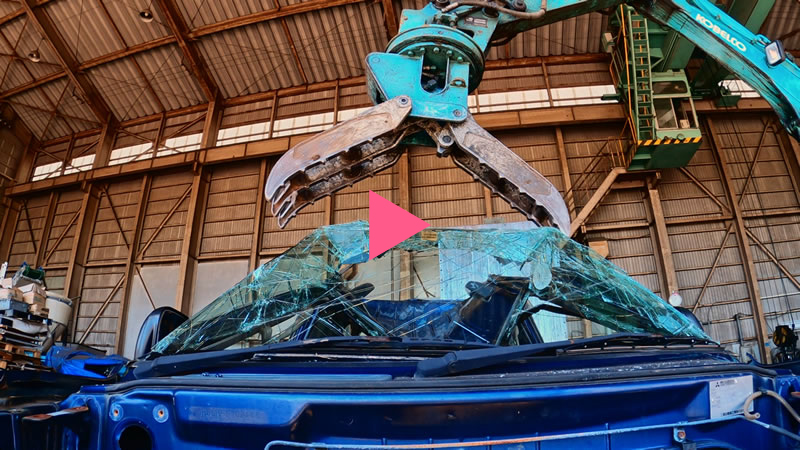
Waste Disposal: Hokko Trading

Waste Disposal: Sutoka
From armor and farming implements to cars and home electronics, iron has long been an invaluable material. For Japan, with its scarcity of natural resources, iron has been especially precious throughout the ages. As early as the Edo period (1603 – 1868), Japan was home to metal recyclers called “furugane-ya,” who collected and resold iron from pots, kettles, and other tools. The old iron was remade into new tools in a cycle that still continues today. Research at Tsubame-Sanjo’s Obayashi archaeological site has uncovered a bellows tuyere and furnace walls used for bloomery smelting. The site dates to the Muromachi period (1336 – 1573), and it is believed that metal recycling was already being conducted in Tsubame-Sanjo at that time.
-
31SAT October
Compilation
・Close
Open Factory Compilation: Tsubame-Sanjo Factory Festival Committee

Close: Factory Festival Committee Chairs (Present & Past)